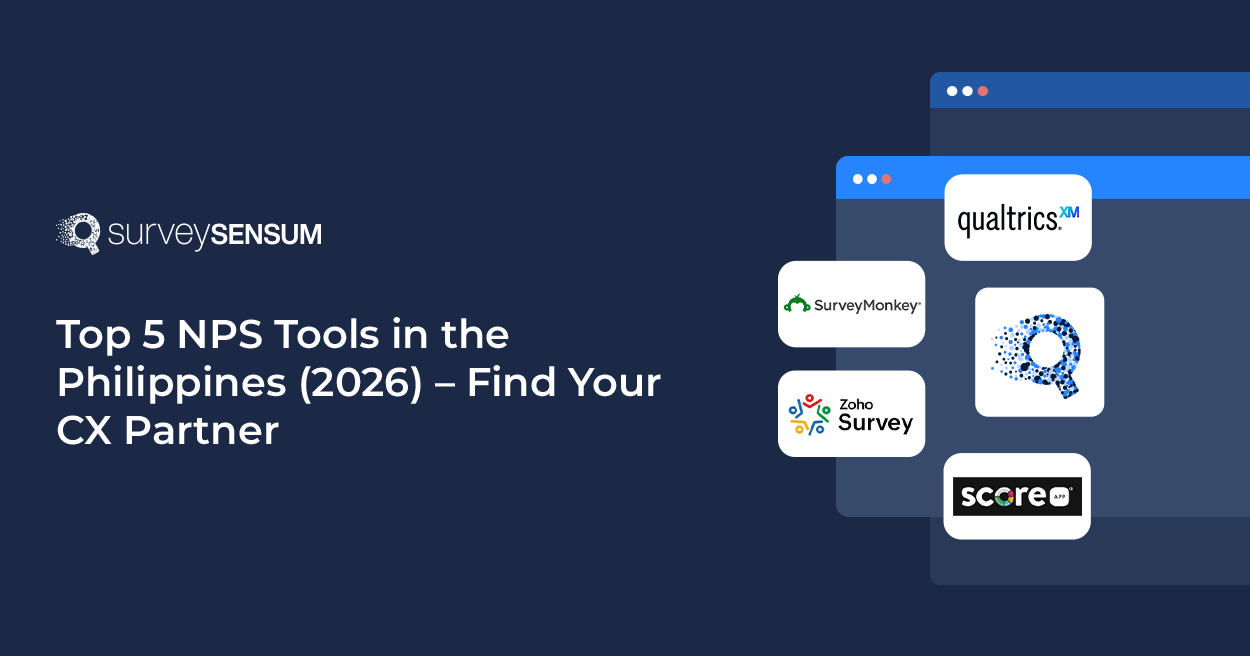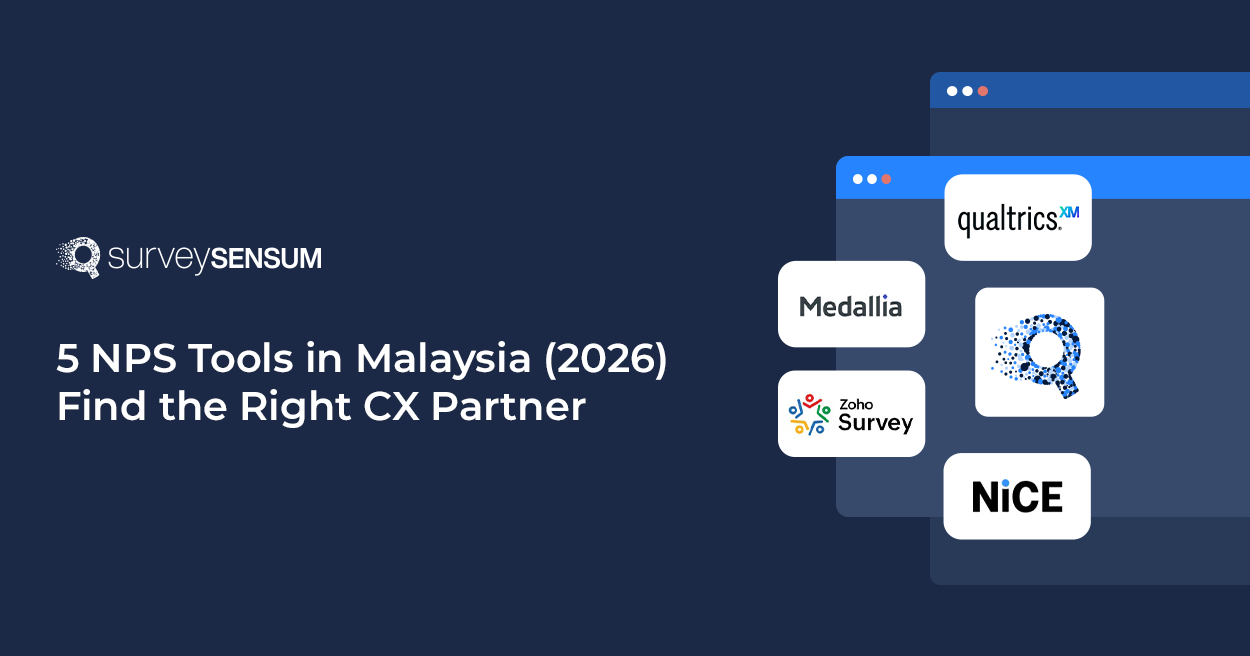

Who exactly is your customer? Are they young professionals, retired individuals, or perhaps students?
Understanding these characteristics is crucial for analyzing how different groups perceive your products or services and tailoring your approach to better meet their needs.
Demographic survey questions hold the key to unlocking these insights. These questions dig into the details of your respondents’ lives, covering age, gender, income, education, and more.
So let’s dive into everything you need to know about crafting effective demographic survey questions with a survey builder, why these questions are essential, how to ask them in a way that is inclusive and respectful, and provide practical examples to get you started.
What are Demographic Survey Questions?

Demographic survey questions are designed to gather information about the characteristics of your survey respondents. These questions typically cover aspects such as age, gender, income, education level, employment status, marital status, ethnicity, and geographic location. The data collected from demographic questions help you understand the background of their audience and analyze how different demographic factors might influence responses to other questions in the survey.
Here’s an example of a demographic survey question:
What is your age?
- Under 18
- 18-24
- 25-34
- 35-44
- 45-54
- 55-64
- 65 or older
Why are Demographic Survey Questions Important to Ask in a Survey?
Demographic survey questions are important for several reasons:
1. Understanding your Buyer Persona:
A buyer persona is a fictional depiction of a particular customer type, which includes their characteristics, job roles, and more.
When you get to know more about your buyer persona you better understand their expectations, objectives, and behavior. This enables you to optimize customer journey maps for each persona and deliver exceptional customer experiences at all touchpoints.
For example, if you’re a student preparing a presentation but short on time, you might look for a service to do my PowerPoint presentation rather than designing it yourself. Similarly, businesses can analyze demographic data to tailor their services to meet specific audience needs.
2. Segmenting Data:
By segmenting responses based on demographic factors, researchers can identify trends and patterns within specific groups. For example, they might find that younger respondents like to shop on mobile while older respondents love the website.
3. Personalizing Communication:
Knowing the demographics of the respondents allows businesses and organizations to personalize their communication and marketing strategies to better reach and resonate with different segments of their audience.
4. Improving Targeting:
Demographic information helps in targeting the right audience for products, services, or campaigns. Understanding who the potential customers are can lead to more effective and efficient marketing efforts.
For instance, if you’re launching a new fitness app, it’s crucial to be strategic about who you’re targeting. By understanding your current customer base, you can segment your launch to focus on those with a specific interest or need for what your new fitness app offers.
5. Ensuring Diversity and Inclusivity:
Collecting demographic data helps ensure that the survey reaches a diverse audience. This is crucial for making sure the results are representative and inclusive of different groups within the population.
6. Analyzing Trends:
Demographic data enables you to categorize survey results in various ways, helping you uncover trends within these specific categories.
For instance, if you notice a sudden increase in product sales, demographic information can help pinpoint which customer segments are driving this trend. This insight allows you to tailor your marketing efforts to reach other segments more effectively.
7. Identifying Bias:
Demographic questions help identify any biases in the data collection process. If certain demographic groups are underrepresented, steps can be taken to correct this and ensure more balanced results.
For example, you’re conducting a survey on customer satisfaction for a new tech gadget. After analyzing the demographic data, you realize that respondents are predominantly male and aged 25-35.
This demographic skew suggests a potential bias in your data collection process. To correct this, you can take steps to reach underrepresented groups, such as targeting more female respondents and older age groups through different marketing channels or incentives. This ensures that your survey results are more balanced and accurately reflect the opinions of your entire customer base.
8. Benchmarking and Comparisons:
Demographic data allows for benchmarking and comparisons across different studies and surveys. This helps in understanding how certain demographics change over time or in response to different interventions.
9. Enhancing Survey Design:
Knowing the demographics of the target population can help in designing surveys that are relevant and accessible to all groups, improving response rates and the quality of the data collected.
Overall, demographic survey questions are essential for gaining a comprehensive understanding of the survey respondents and making the most out of the data collected.
Design surveys effortlessly with Surveysensum. Ensure clarity, sensitivity, and inclusivity in your demographic questions.
Let’s now look at some examples of demographic survey questions.
Examples of Demographic Survey Questions
Here are 15 examples of demographic questions to ask in a survey:
1. Age:
What is your age?
- Under 18
- 18-24
- 25-34
- 35-44
- 45-54
- 55-64
- 65 or older
2. Gender:
What is your gender?
- Male
- Female
- Non-binary/Third gender
- Prefer to self-describe: [open-ended]
- Prefer not to say
3. Income:
What is your annual household income?
- Less than $25,000
- $25,000 to $49,999
- $50,000 to $74,999
- $75,000 to $99,999
- $100,000 to $149,999
- $150,000 or more
4. Education:
What is the highest level of education you have completed?
- Less than high school
- High school diploma or equivalent
- Associate degree
- Bachelor’s degree
- Graduate or professional degree
5. Employment Status:
What is your current employment status?
- Employed full-time
- Employed part-time
- Self-employed
- Unemployed
- Student
- Retired
- Homemaker
6. Marital Status:
What is your marital status?
- Single, never married
- Married or domestic partnership
- Widowed
- Divorced
- Separated
7. Ethnicity:
What is your ethnicity?
- White
- Black or African American
- Hispanic or Latino
- Asian
- Native American or Alaska Native
- Native Hawaiian or Other Pacific Islander
- Other (please specify)
- Prefer not to say
8. Geographic Location:
Where do you currently live? (City/State/Country)
9. Household Composition:
How many people live in your household, including yourself?
- 1
- 2
- 3
- 4
- 5 or more
10. Primary Language:
What is your primary language?
- English
- Spanish
- Chinese
- French
- Other (please specify)
11. Housing Status:
What is your current housing situation?
- Own
- Rent
- Live with parents/relatives
- Other (please specify)
12. Religious Affiliation:
What is your religious affiliation?
- Christianity
- Islam
- Judaism
- Hinduism
- Buddhism
- Other (please specify)
- None
- Prefer not to say
13. Disability Status:
Do you have any disabilities?
- Yes
- No
- Prefer not to say
14. Political Affiliation:
What is your political affiliation?
- Democrat
- Republican
- Independent
- Other (please specify)
- Prefer not to say
15. Sexual Orientation:
What is your sexual orientation?
- Heterosexual
- Homosexual
- Bisexual
- Other (please specify)
- Prefer not to say
These questions can help gather comprehensive demographic data to analyze and understand the characteristics and diversity of the survey respondents.
Ready to gather comprehensive customer demographic data? Start creating your survey with SurveySensum!
Best Practices for Crafting Demographic Survey Questions
Crafting demographic survey questions requires careful consideration to ensure clarity, sensitivity, and inclusivity. Here are some best practices for creating effective demographic survey questions:
1. Define the Purpose of Your Survey
Understanding why you’re conducting the survey is crucial. It guides the selection of demographic questions and ensures that the data collected aligns with your research objectives. Consider adding a brief explanation of the survey’s purpose at the beginning to improve respondent engagement and clarity.
2. Tailor Demographic Questions to Your Goals
Not every demographic question is relevant to every survey. Customize your demographic questions based on the specific insights you need. This tailored approach ensures that you collect meaningful data without overwhelming respondents with unnecessary questions.
3. Balance Mandatory and Optional Demographic Questions
While some demographic questions may be essential, offering flexibility is key. Allow respondents to skip questions they’re uncomfortable with or provide an “other” option with an open-ended response field. This promotes inclusivity and encourages honest participation.
4. Respect Respondents’ Privacy
Provide the option for respondents to opt out of answering sensitive or personal questions. This promotes a safe and respectful survey environment, increasing respondent trust and participation.
5. Strategically Place Demographic Questions
Consider the sequence of questions in your survey. Place demographic questions towards the end to maintain respondents’ focus on the main content initially. This approach encourages completion rates and ensures that demographic data doesn’t overshadow primary insights.
6. Consider Anonymous Surveys
Informing respondents that their responses will be anonymous can boost their willingness to share personal information. Assuring anonymity can lead to more candid and accurate responses, enhancing the quality of your data.
Conclusion
Demographic survey questions are crucial for gathering comprehensive information about the characteristics of survey respondents. Demographic data is invaluable for segmenting data, personalizing communication, improving targeting, ensuring diversity and inclusivity, analyzing differences, identifying biases, etc. Using these organizations can create demographic survey questions that yield valuable insights, enhance the quality of data collected, and support informed decision-making.
SurveySensum is a powerful tool that can help design and analyze surveys with these principles in mind, ensuring that demographic data collection is efficient, respectful, and insightful.
Frequently Asked Questions on Demographic Survey Questions
A five-question survey typically includes a small set of concise questions designed to gather essential information quickly. Demographic survey questions examples might include:
- What is your age group? (e.g., Under 18, 18-24, 25-34, etc.)
- What is your gender? (e.g., Male, Female, Non-binary, Prefer not to say)
- What is your highest level of education? (e.g., High school, Associate degree, Bachelor’s degree, etc.)
- What is your current employment status? (e.g., Employed, Unemployed, Student, Retired)
- What is your annual household income? (e.g., Less than $25,000, $25,000-$49,999, $50,000-$74,999, etc.)
Creating demographic questions for the survey involves several key steps:
- Define Objectives: Determine what demographic information is necessary for your study.
- Select Relevant Demographics: Choose categories like age, gender, income, education, etc., that are relevant to your research.
- Design Questions: Write clear, concise, and unbiased questions with appropriate response options.
- Ensure Inclusivity: Provide diverse response options and include “Other” and “Prefer not to say” where applicable.
- Pretest the Questionnaire: Pilot the questionnaire with a small group to identify and fix any issues.
A socio-demographic questionnaire collects data on both social and demographic characteristics of respondents. It includes questions on age, gender, income, education, employment, marital status, ethnicity, and additional social factors such as housing conditions, family composition, and social status. This type of survey demographic questions in a questionnaire helps researchers understand the social context and background of their respondents, providing deeper insights into how these factors influence behaviors and opinions.
Sample surveys in demographic studies are research methods used to collect data from a subset of a population to make inferences about the entire population. These surveys gather information on various demographic characteristics such as age, gender, income, education, and household composition. They are often used in population studies, market research, and public health to understand trends, behaviors, and needs within a population. The results from sample surveys help inform policy decisions, business strategies, and academic research.
- Age: What is your age?
- Gender: What is your gender?
- Education Level: What is the highest level of education you have completed?
- Income: What is your annual household income?
- Occupation: What is your current occupation?
- Marital Status: What is your marital status?
- Ethnicity/Race: How do you identify your ethnicity/race?
- Location: What is your current place of residence?
- Household Size: How many people live in your household?
Demographic questions are important because they help segment respondents into meaningful categories, allowing for more detailed and accurate analysis. They provide context to the survey data, enable the identification of patterns and trends, and ensure that the survey results are representative of the target population.
- Be Respectful and Sensitive: Frame questions in a way that respects respondents’ privacy and identities.
- Use Clear and Simple Language: Ensure that questions are easily understandable.
- Provide Inclusive Options: Offer a range of responses that accommodate all possible answers, including “Prefer not to answer.”
- Order Carefully: Place demographic questions at the beginning or end of the survey to avoid fatigue affecting responses.
- Use Consistent Formats: Use consistent answer formats (e.g., dropdowns, checkboxes) to make the survey easy to complete.
Maximize the potential of your surveys with Surveysensum. Collect and analyze demographic data to support your business decisions.








![The image shows the title of the blog 20+ Demographic Survey Questions [Examples & Best Practices].](https://surveysensum.com/wp-content/uploads/2024/06/image2-6.png)








